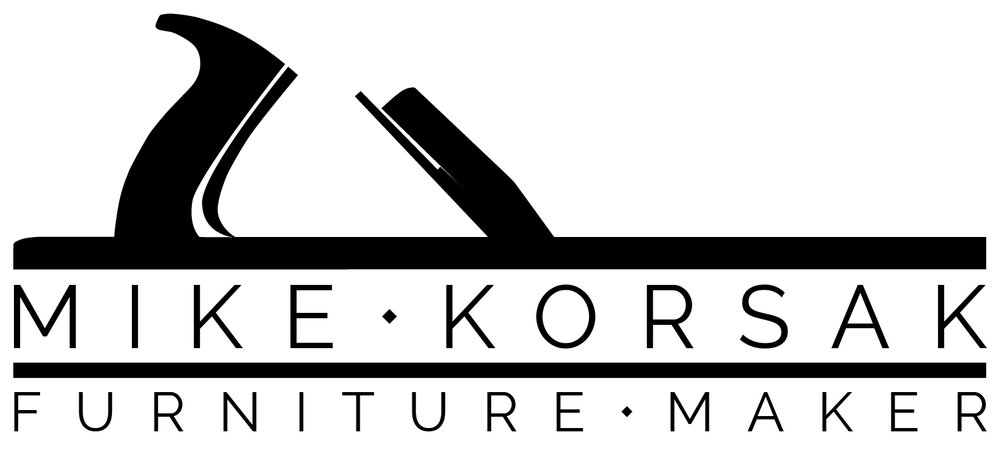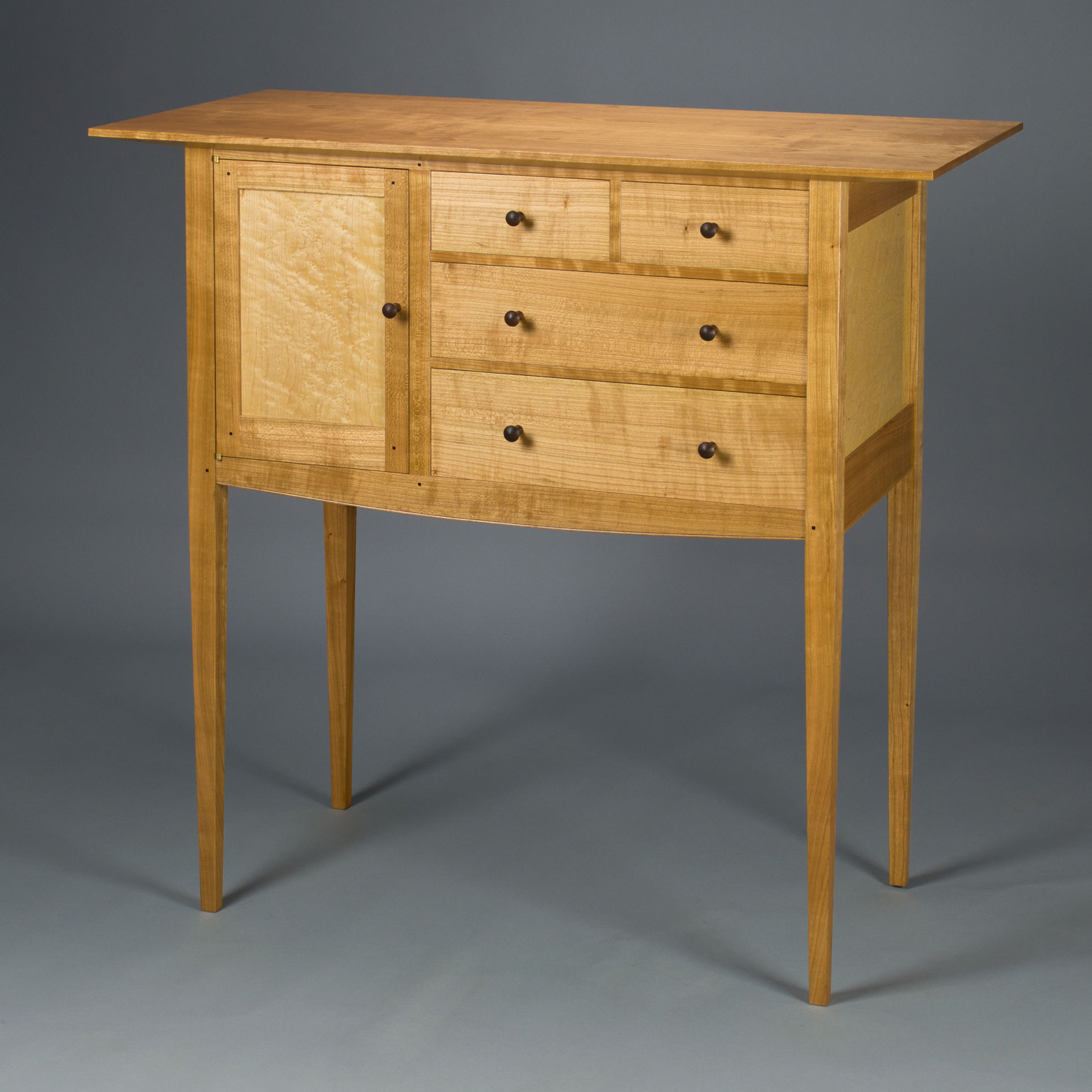Figured Out, a side table made of curly birch and rosewood. This one is from a few years ago but still a favorite of all the pieces I've built.
A Visit With an Old Friend - 60th Sideboard
Here's a sideboard from a few years ago, made of cherry and birds eye maple. I call it 60th Sideboard.
Why Are There Arrows Sticking Out of This Cabinet?
You may recall a curvy two-piece ensemble that I debuted in late 2014, named Echo and Narcissus. In early 2015, after some frustration with certain aspects of the wall cabinet, Echo, I was inspired to make some changes to the cabinet that expressed that frustration. The image at left clearly describes those changes. For anyone interested in more specifics about how the new piece was actually made, the recipe (or as much of it as I'm willing to reveal) is as follows:
(1) finely crafted and detailed cabinet and mirror ensemble
frustration, a healthy pinch
(3) handmade arrows w/ broadheads
(1) longbow
a drill press
I'm calling the new piece Negotiated Peace (formerly Echo & Narcissus). For more images, visit my Gallery page.
The decision to change the piece was not an easy one. I debated with myself for days, stressed, didn't sleep. The thought of potentially destroying something I had created was scary, but so very intriguing. In the end, that inner voice won out, the one that kept saying "you know I'm right, quit fooling yourself and do it." The funny thing about that voice: it's always right.
Echo and Narcissus
I recently completed this mirror and wall cabinet, named Echo and Narcissus. They are made of black walnut and Douglas-Fir and both feature curved elements.
The front face and doors of the wall cabinet, Echo, are curved. I made the curved doors by gluing up a 5-layer core of shop-sawn veneers over a curved form, alternating the grain direction of each ply. Then I pressed decorative Douglas-Fir veneers onto the outside and inside faces of each door.
The mirror, Narcissus, has a curved "crown" with decorative Douglas-Fir veneer. The process for this crown was slightly different. Using the same curved form, I glued up a 5-layer core of shop sawn veneers. Because the crown would be contained somewhat by the black walnut above and below, I didn't alternate the grain direction of the plies. Once the core was laid up, I pressed the decorative Douglas-Fir face veneer to the outside face.
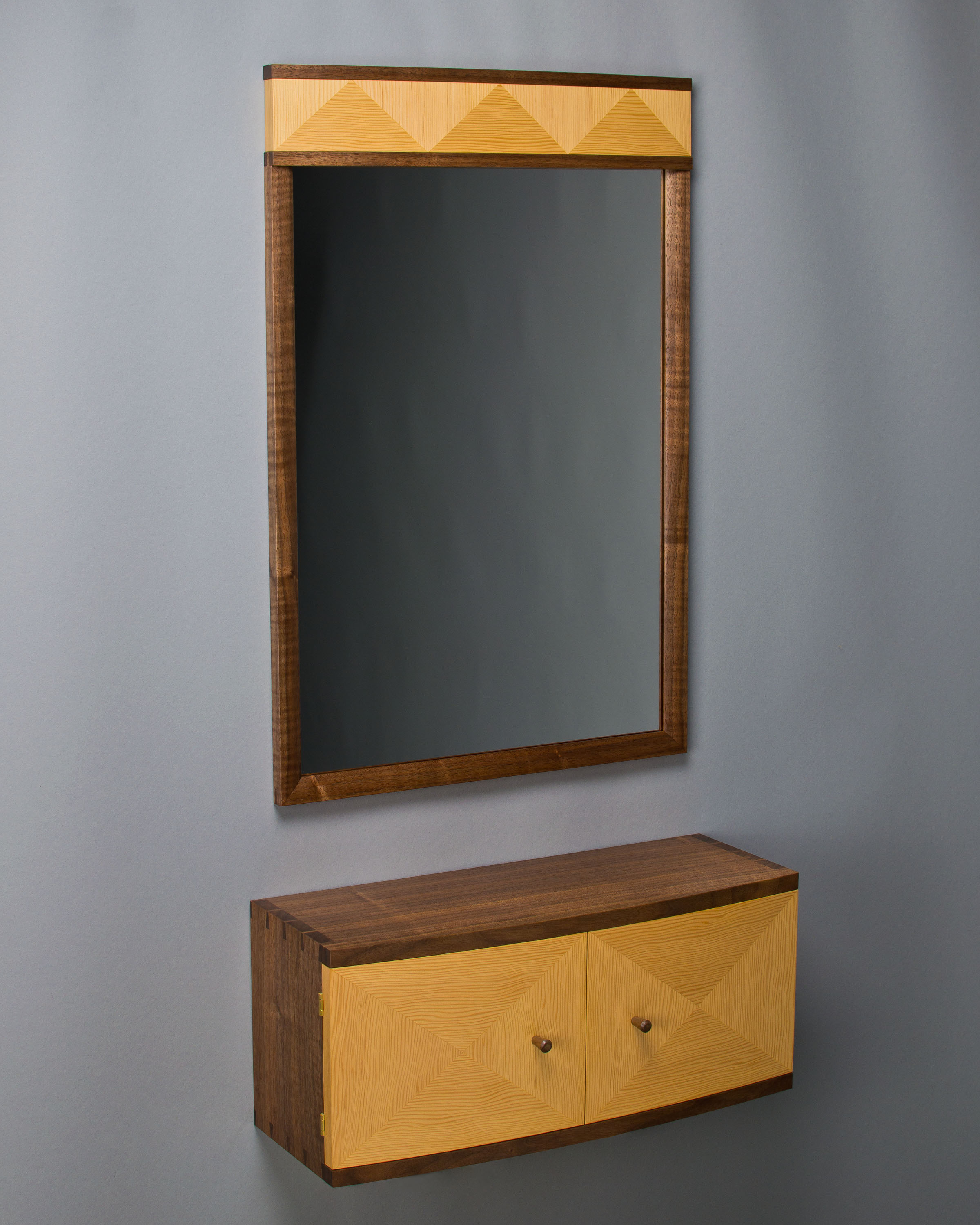
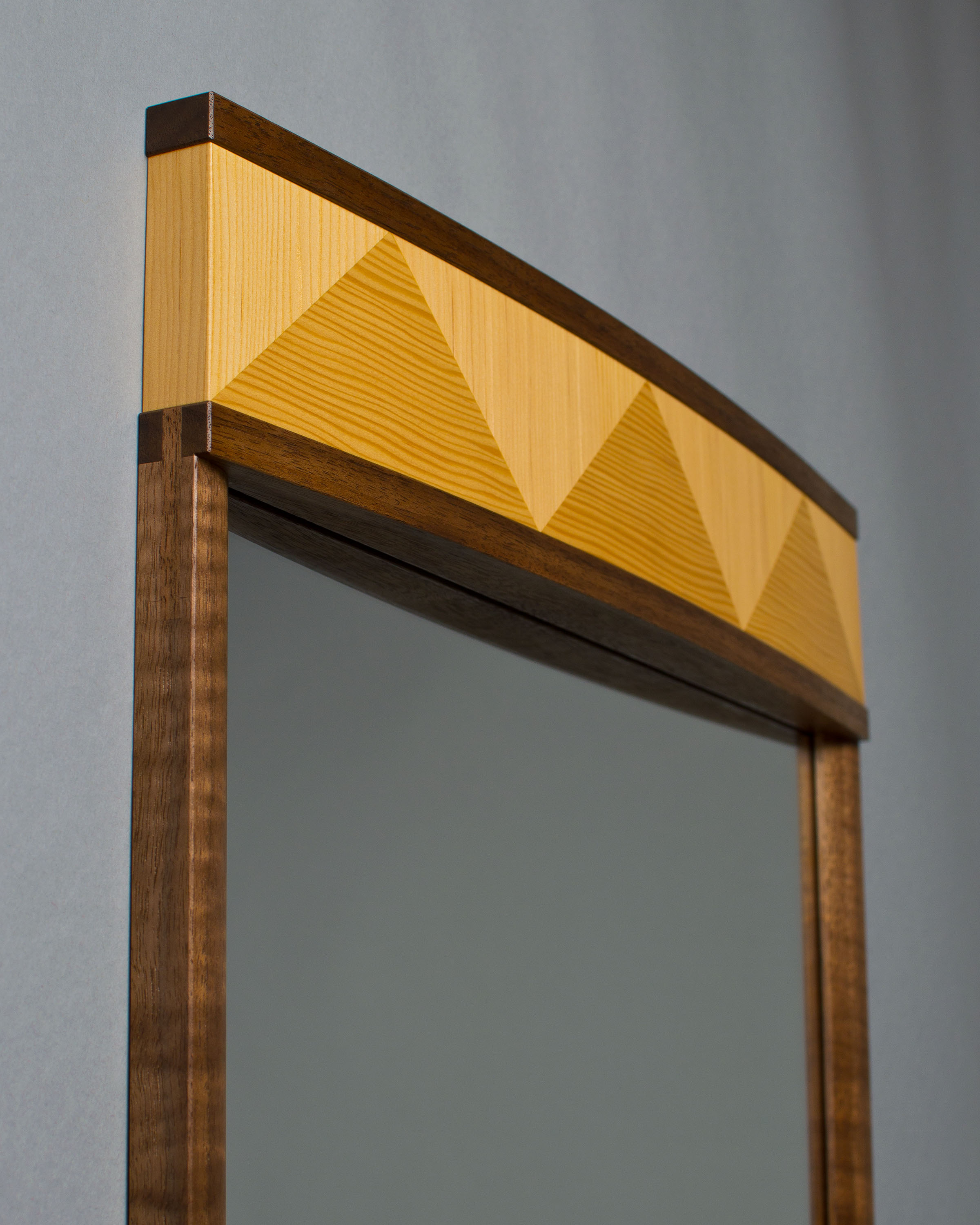
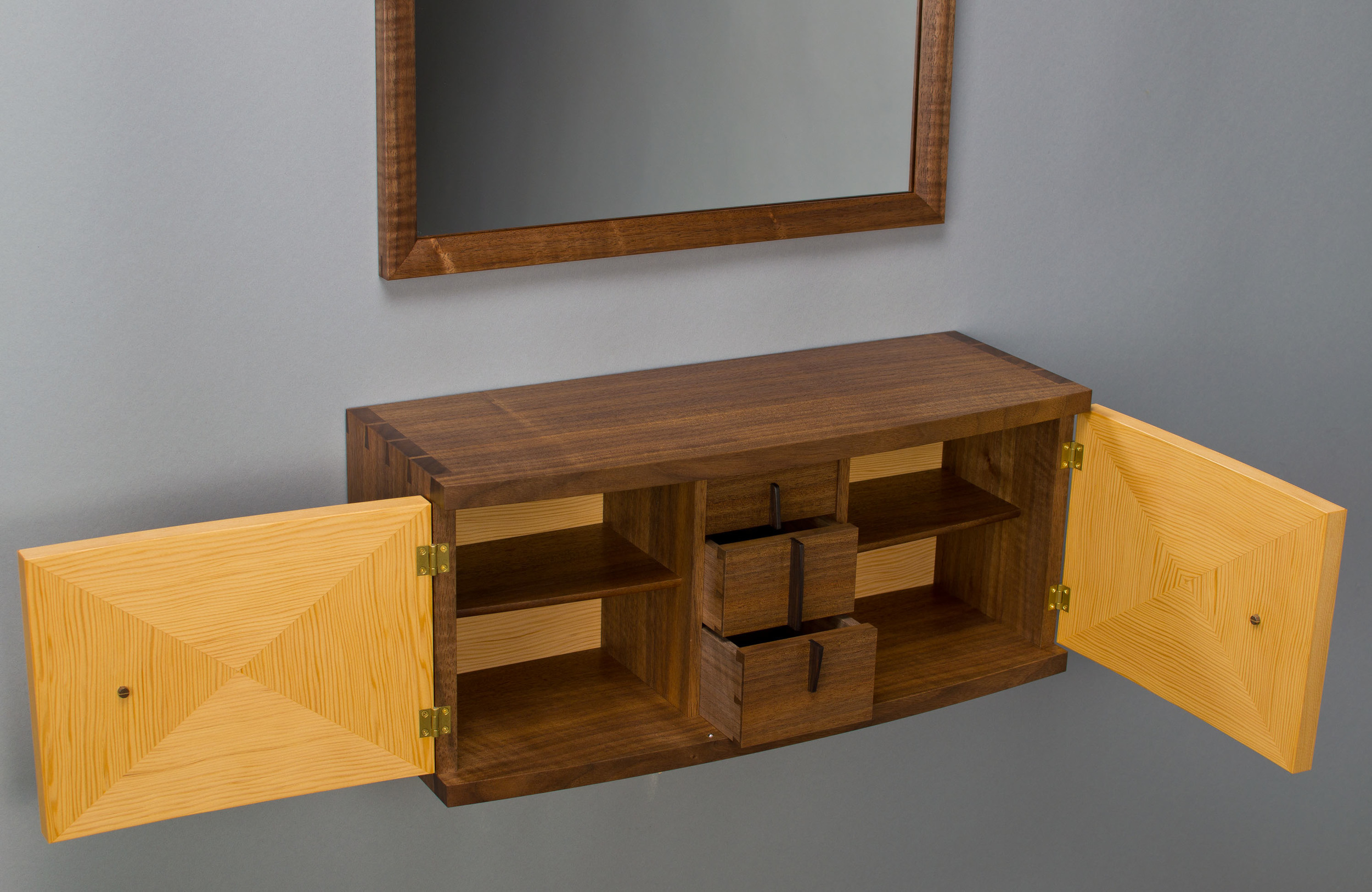
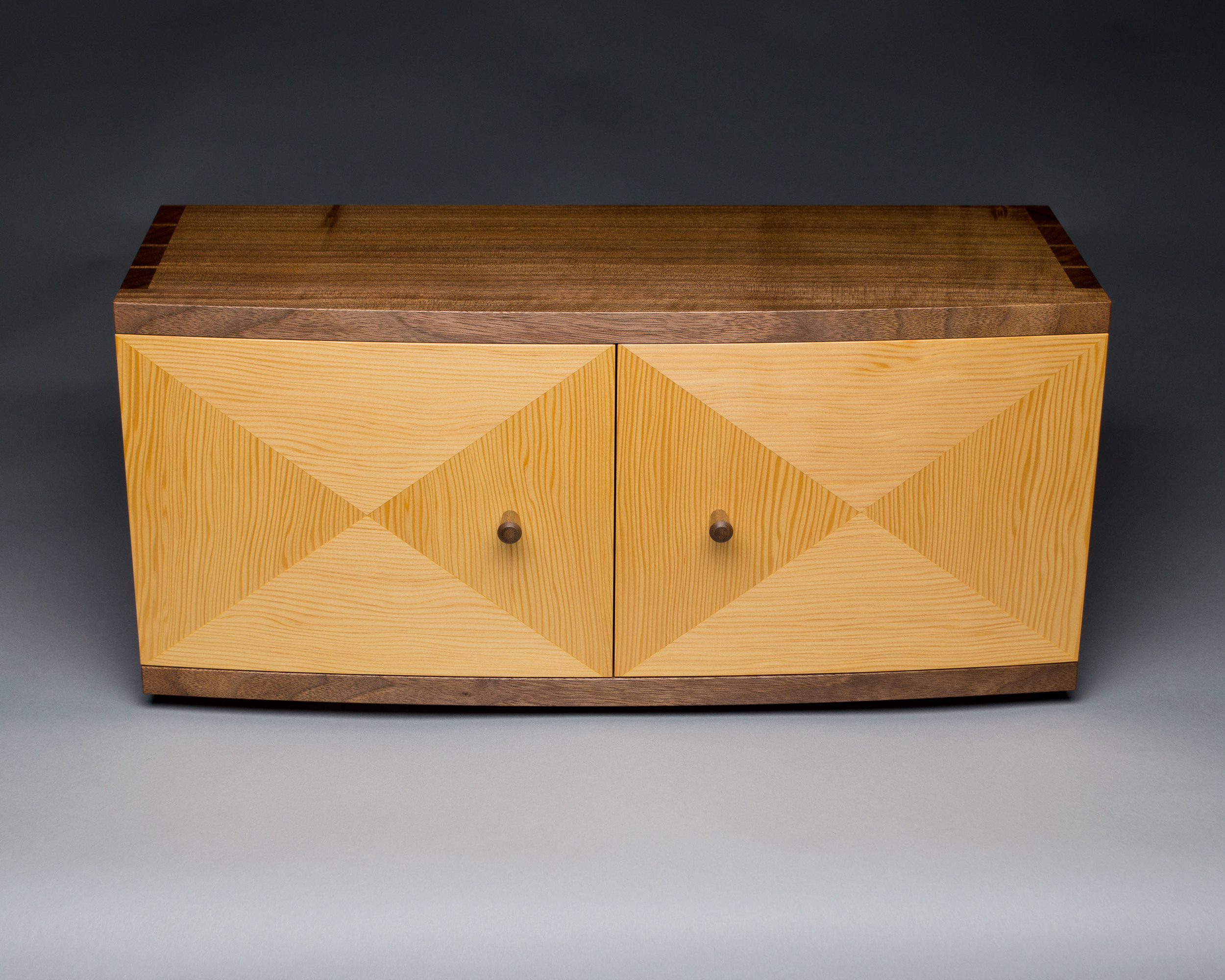
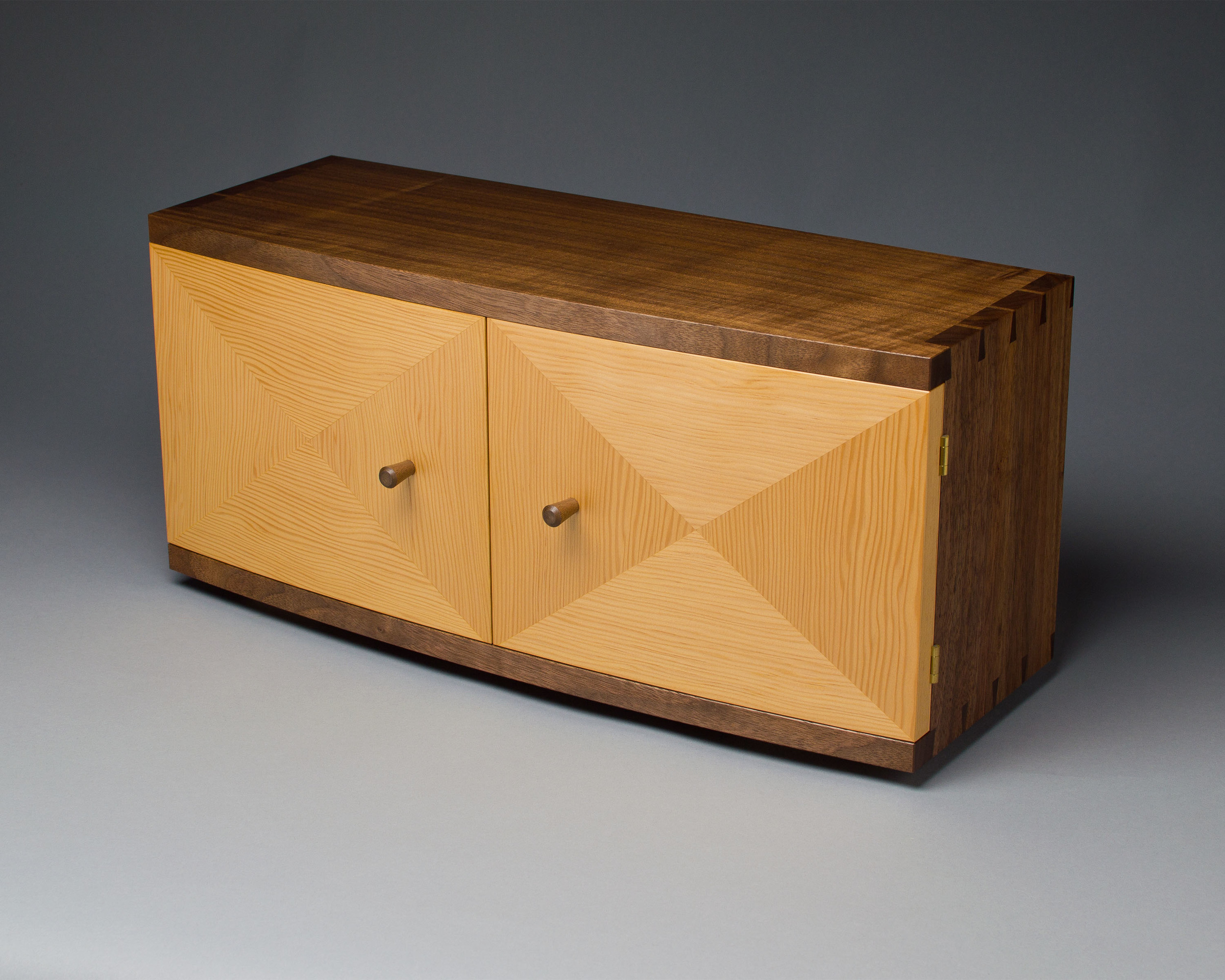
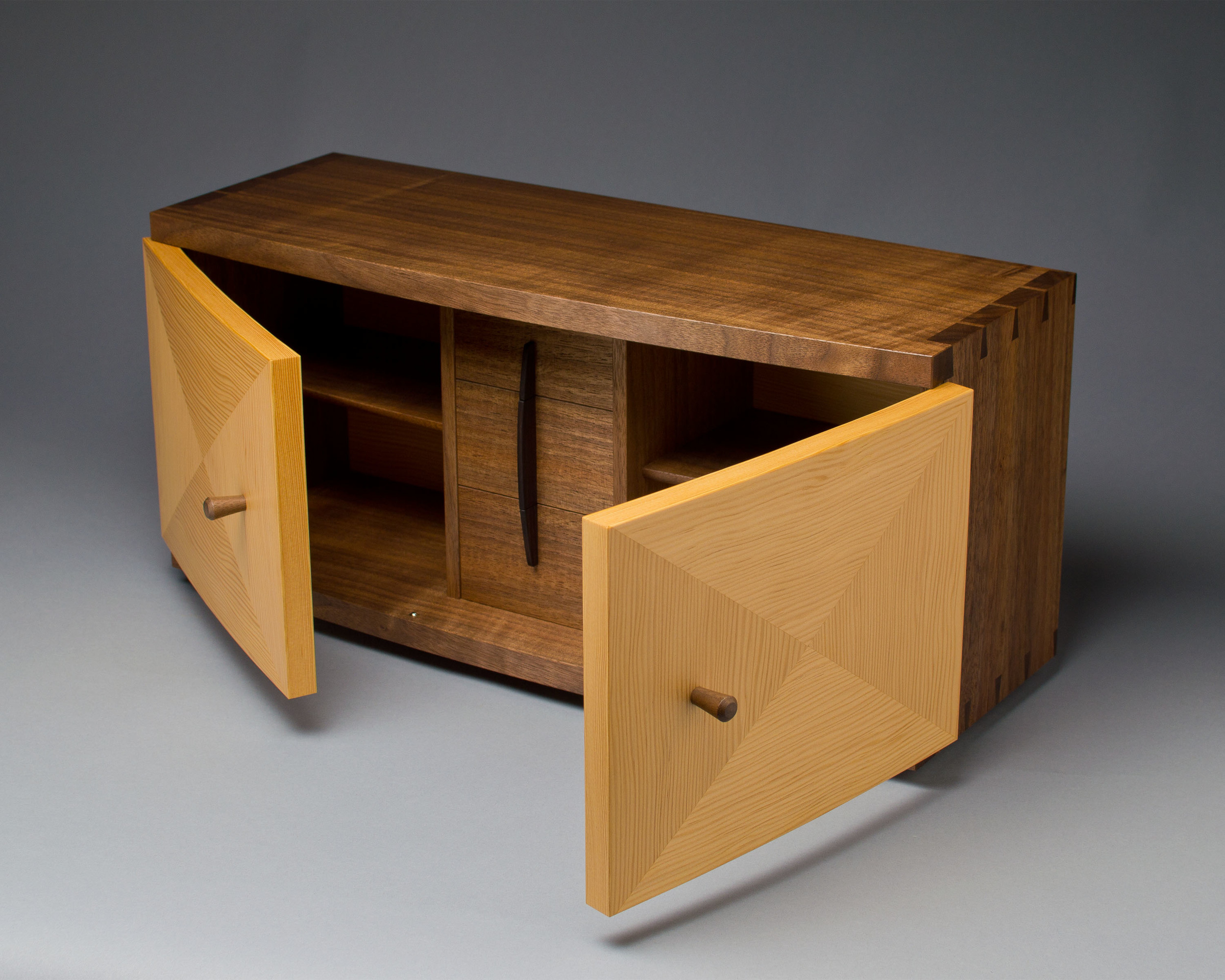
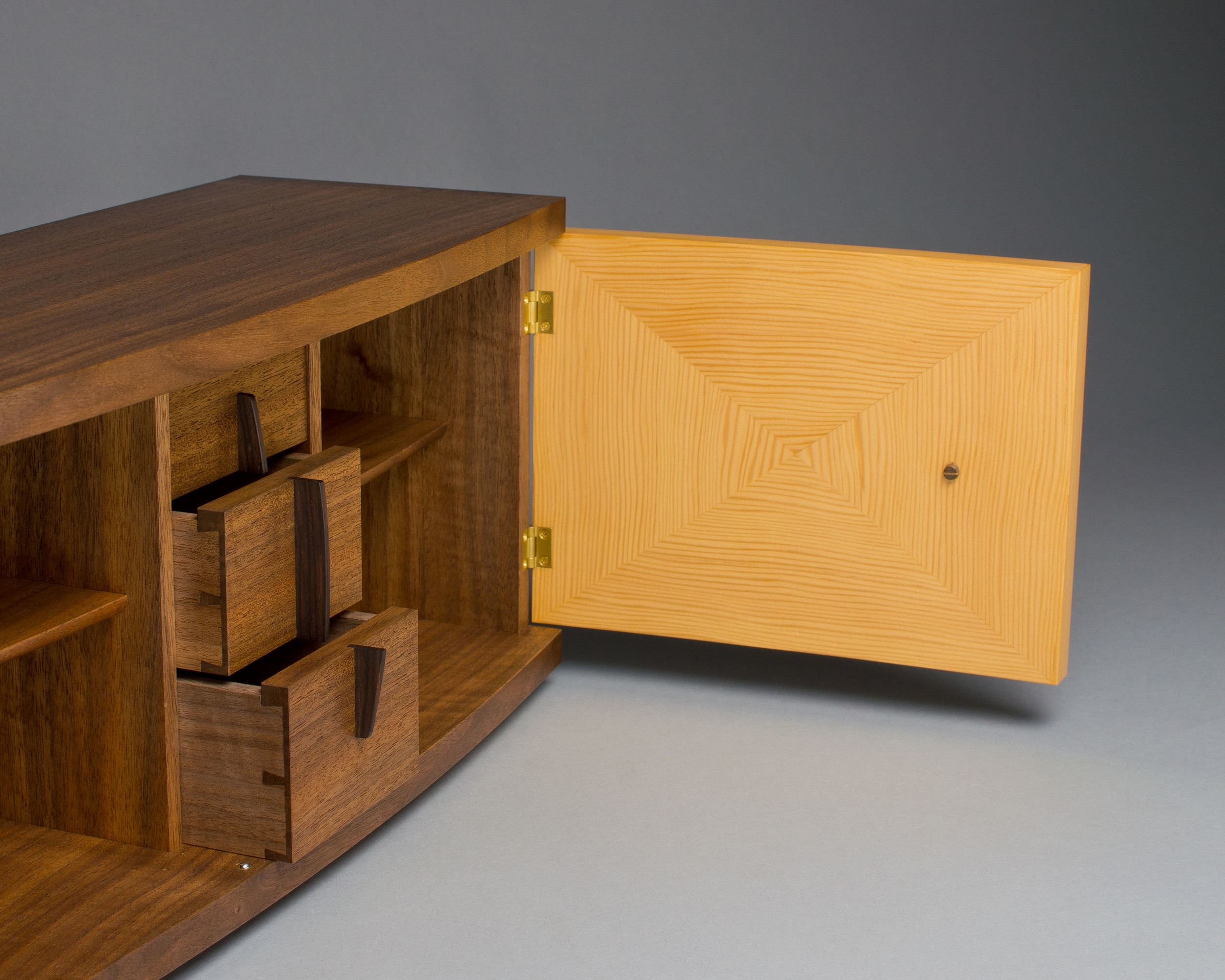
Walnut and Maple Cabinet
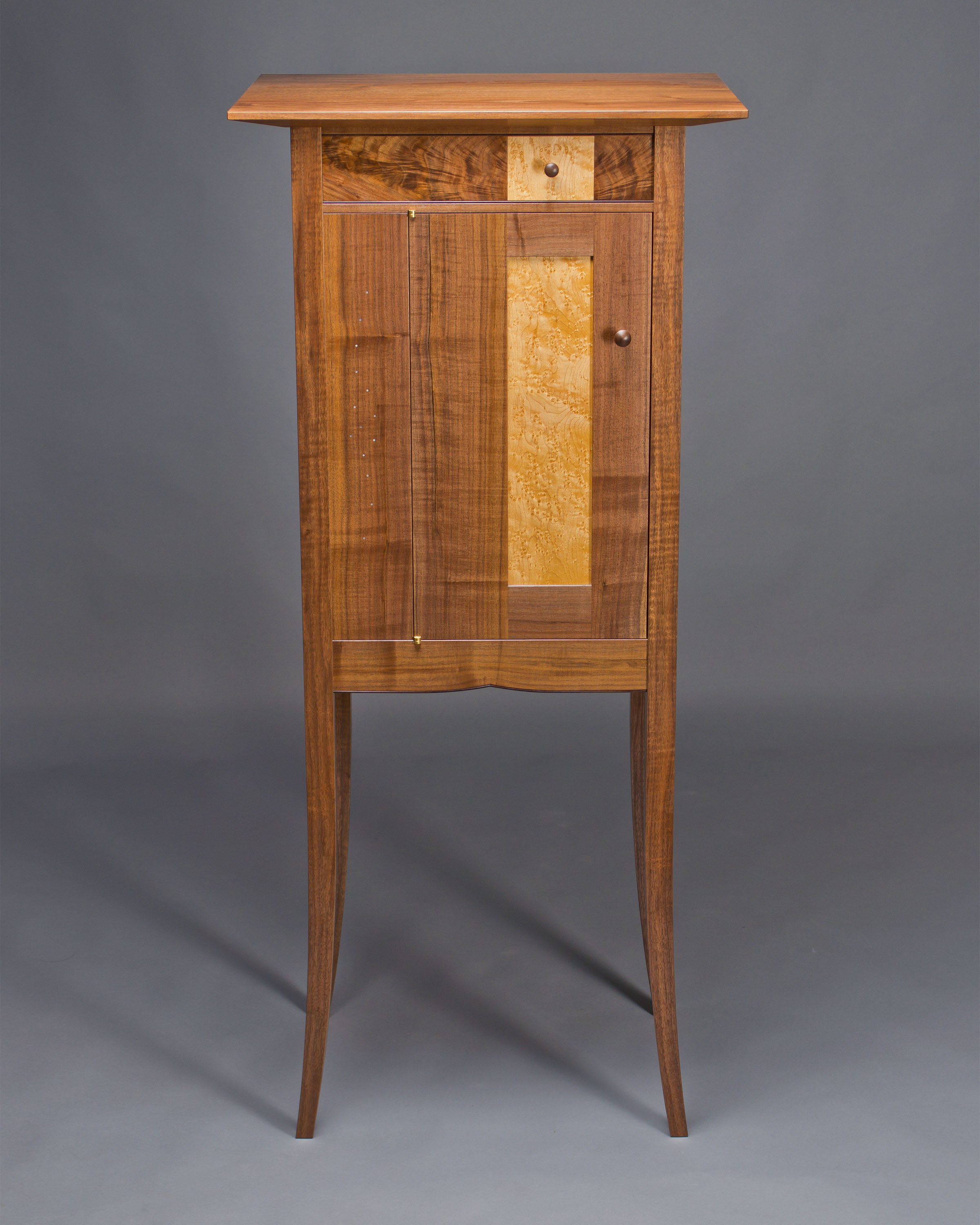
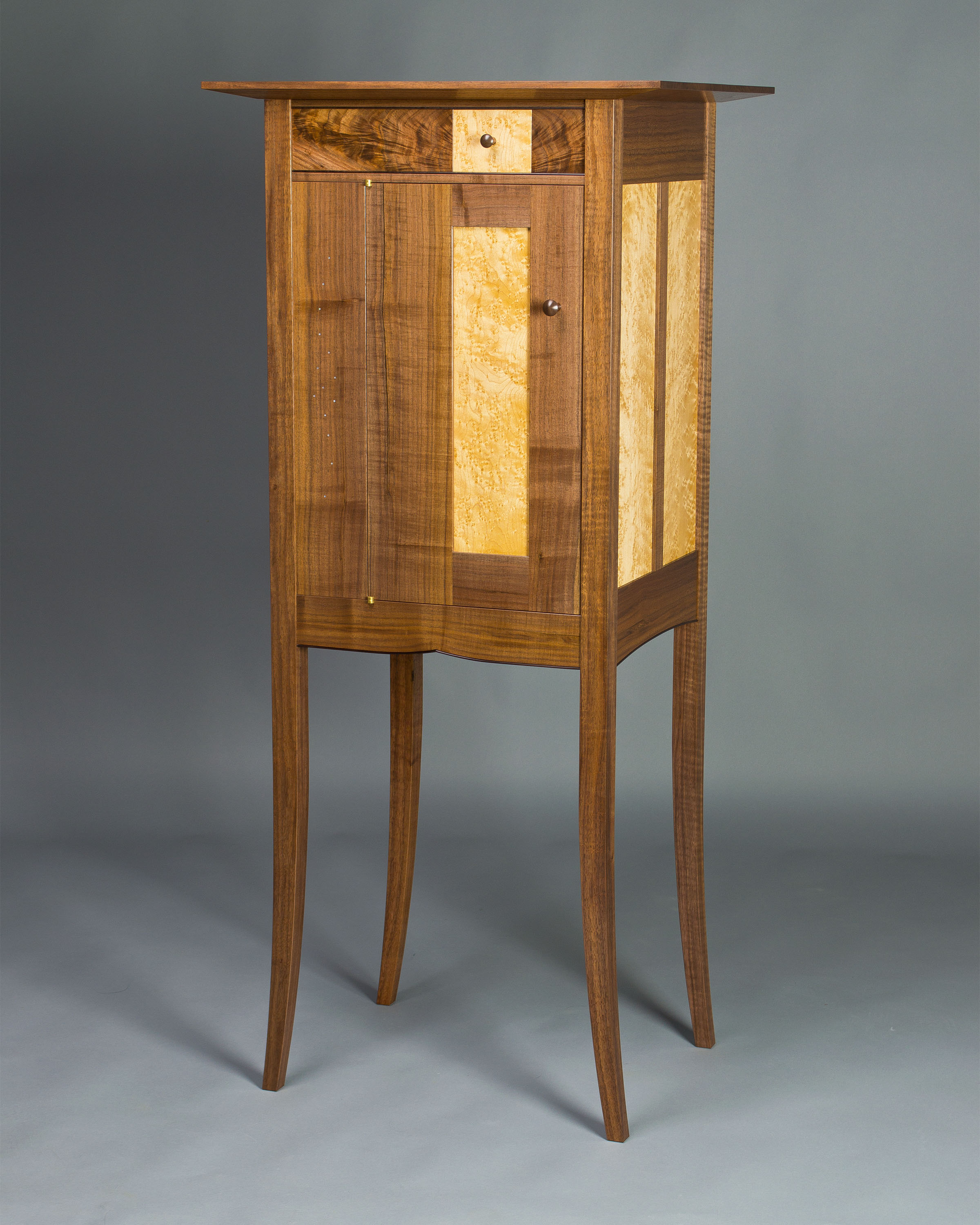
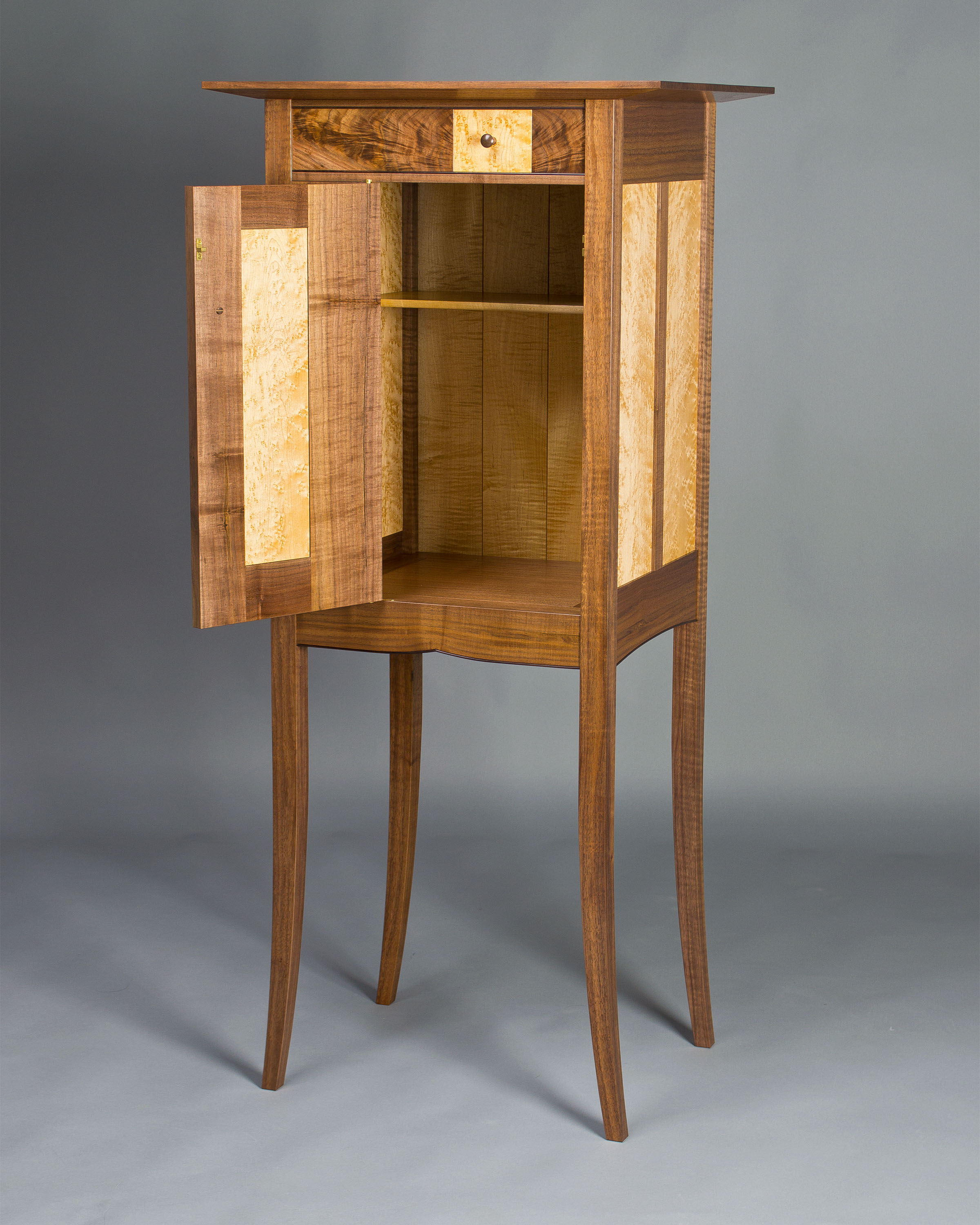

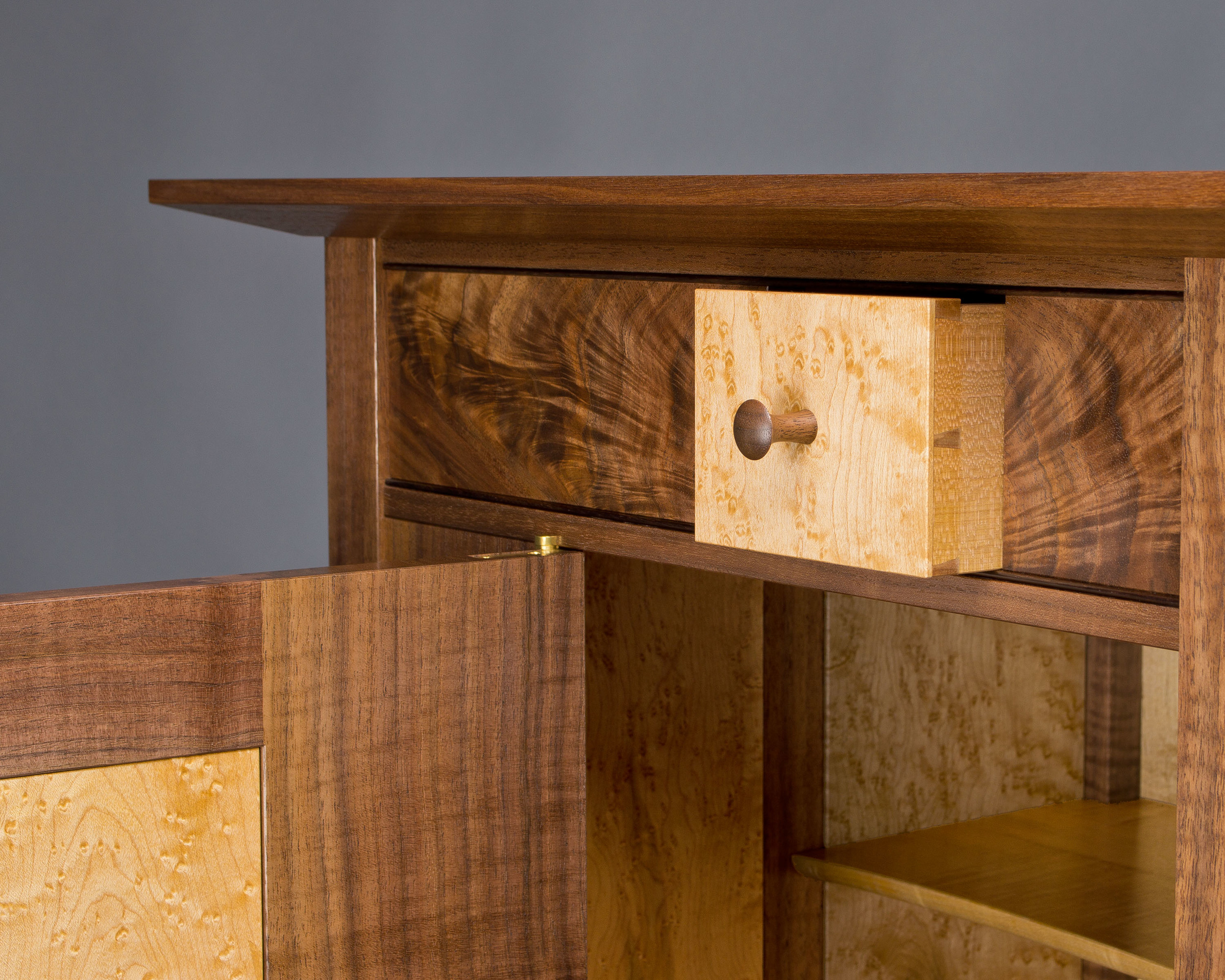
I recently finished this cabinet and wanted to post some pictures. It is made of black walnut and maple (birds eye and curly), with a bit of East Indian rosewood used for the decorative beads.
The design started from a sketch, and I worked on it in CAD and then moved to full-scale drawings. I spent a lot of time working out the details, such as the top panels of crotch walnut that flank the single drawer, the mother of pearl inlay, the fixed stile to the left of the door. I also spent a fair amount of time on the curved legs – designing curves that were subtle, yet graceful. After many iterations on paper, I made a full size leg template which allowed for further refinement, and doubled as a pattern for shaping the legs later on.
To achieve the curves in the legs, I heated the bottom portion of the legs with steam then bent them over a form, a process called steam bending. After a week or more of drying, I shaped the legs to the template, starting with the bandsaw to rough out the shape, then refining with hand planes and spokeshaves.
